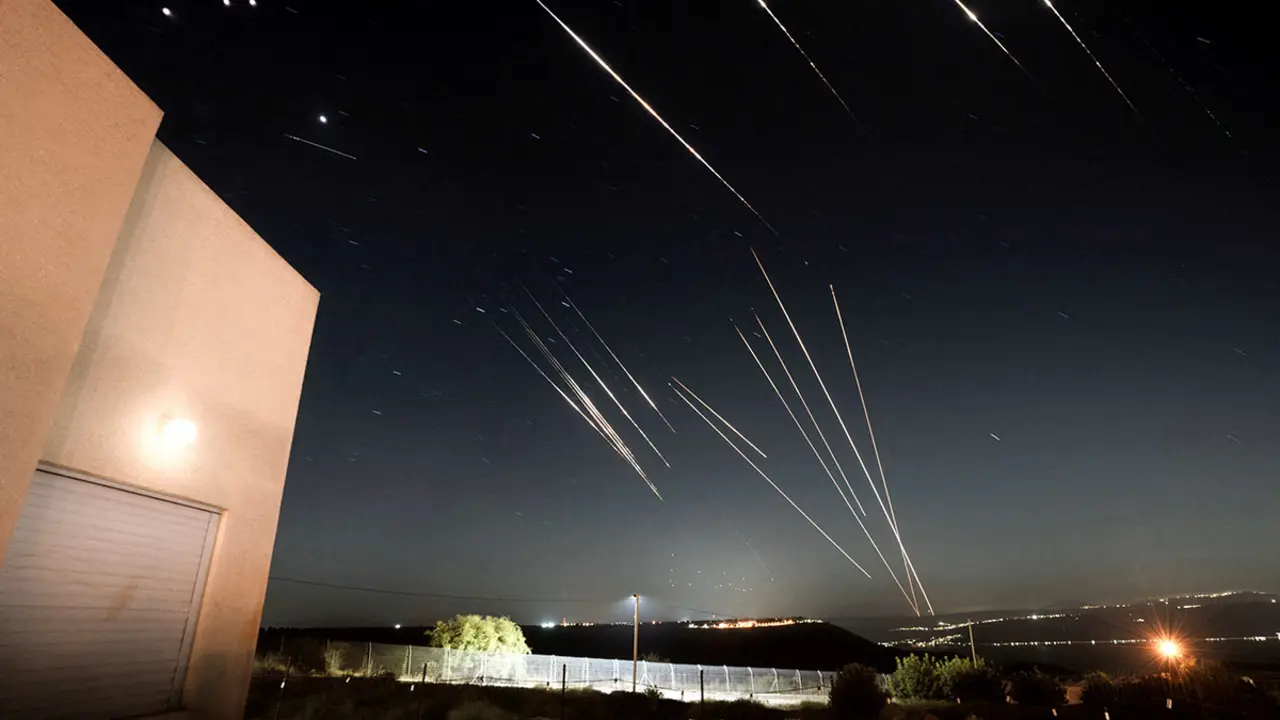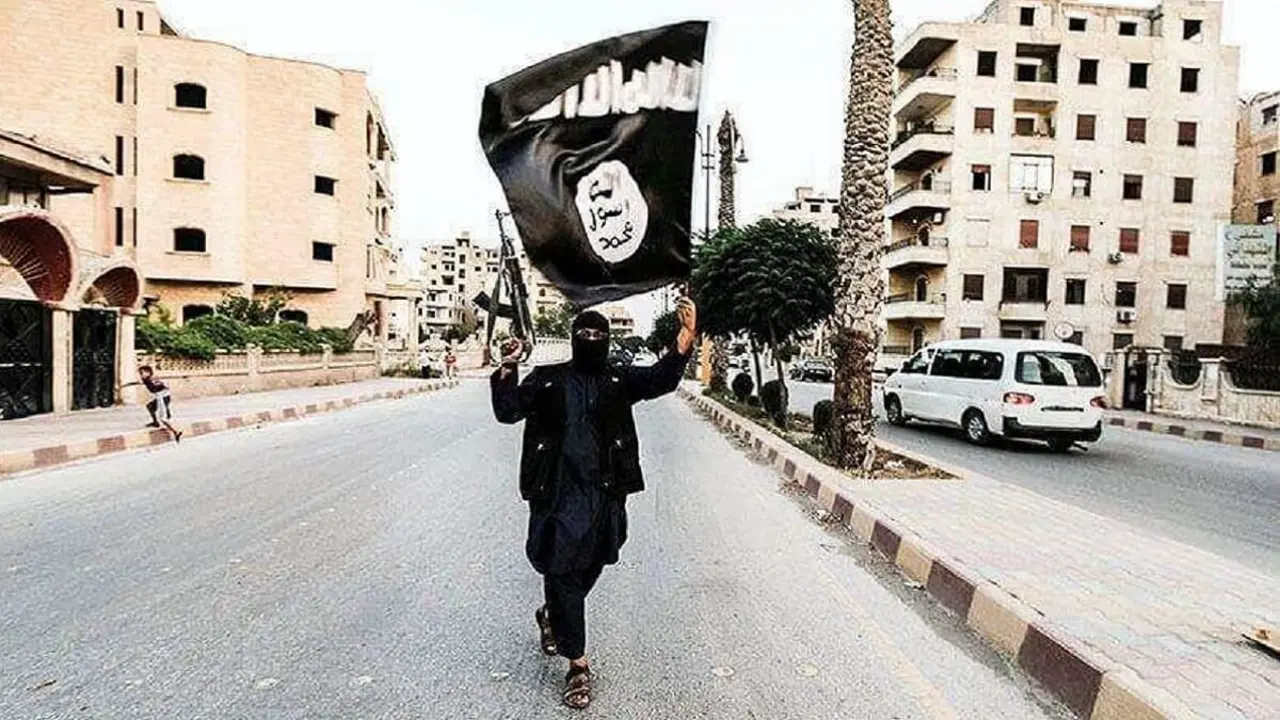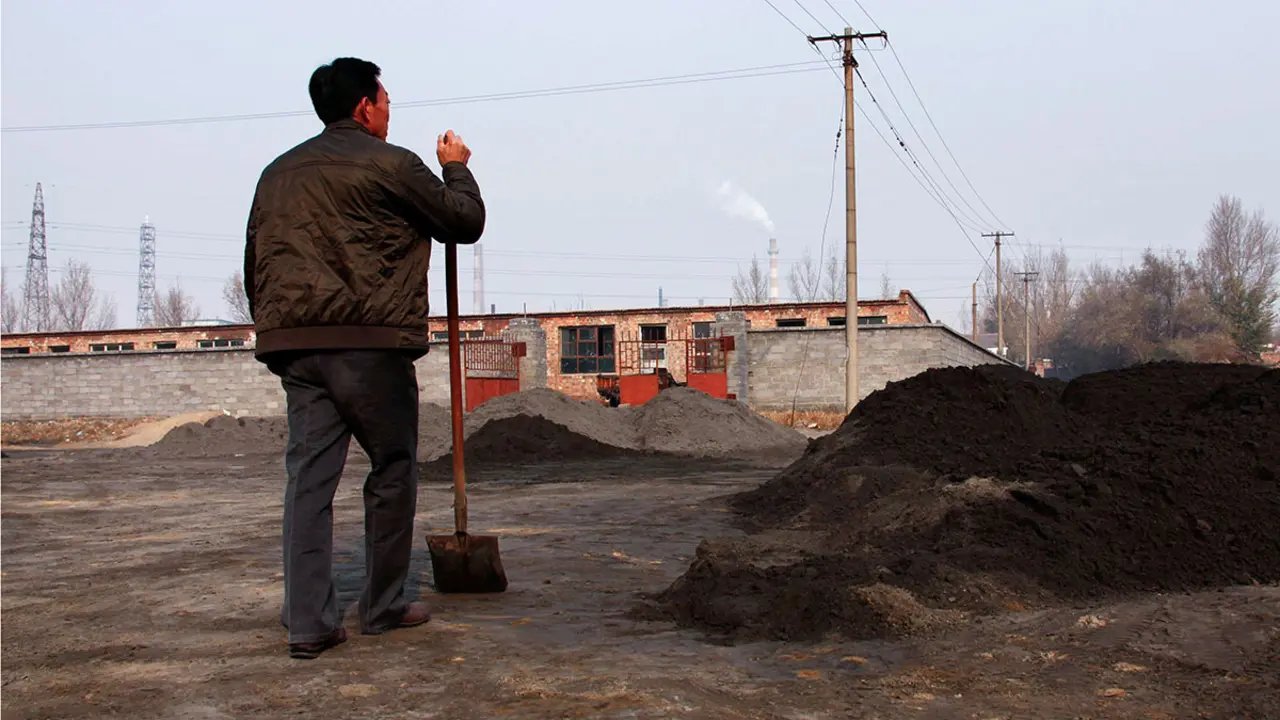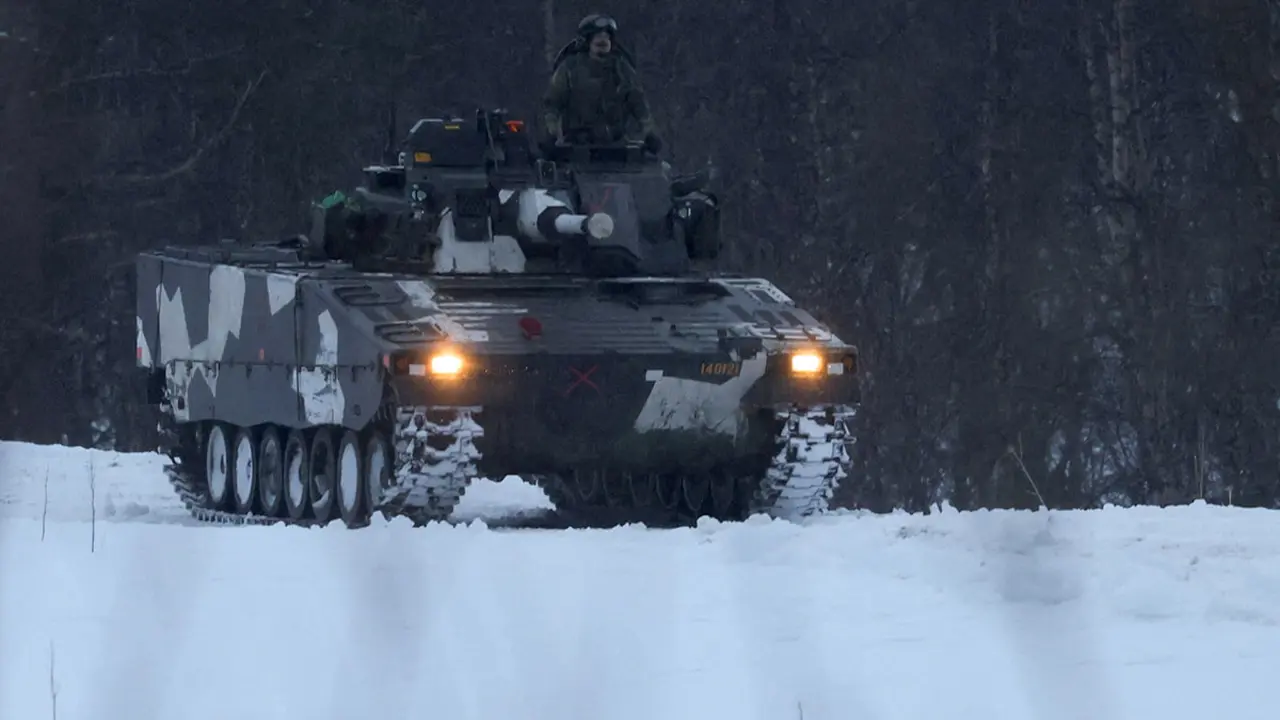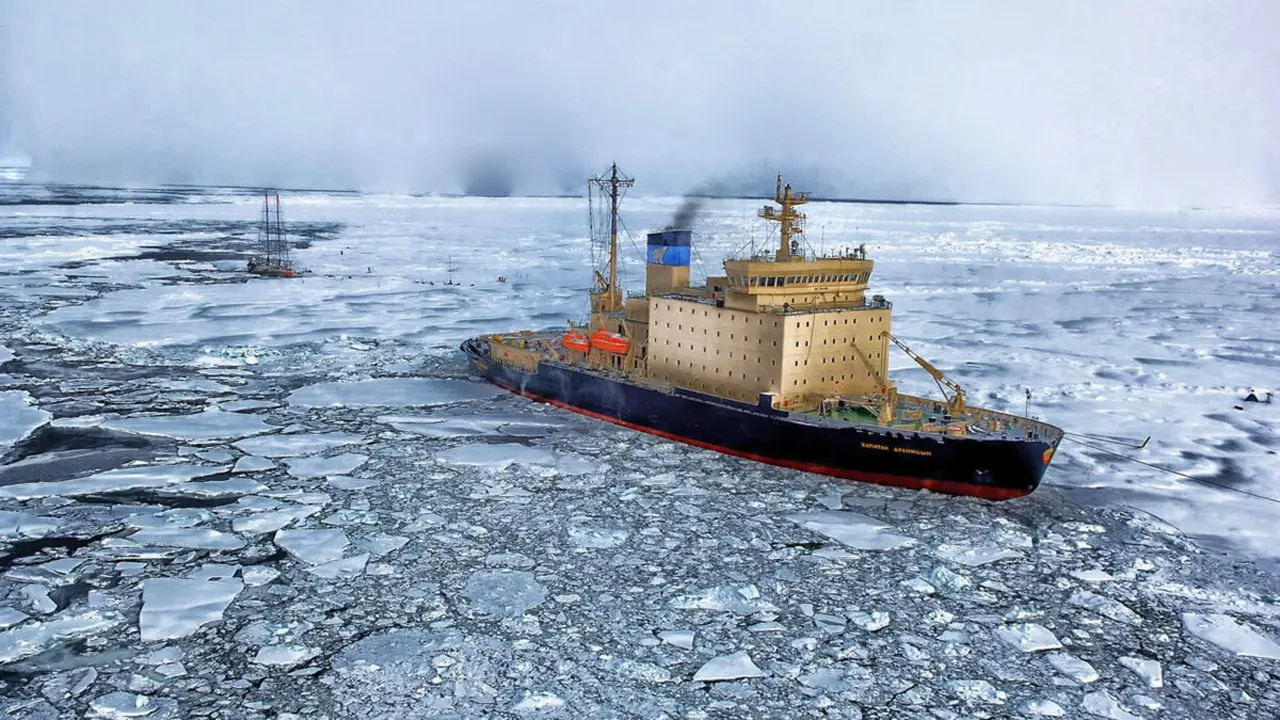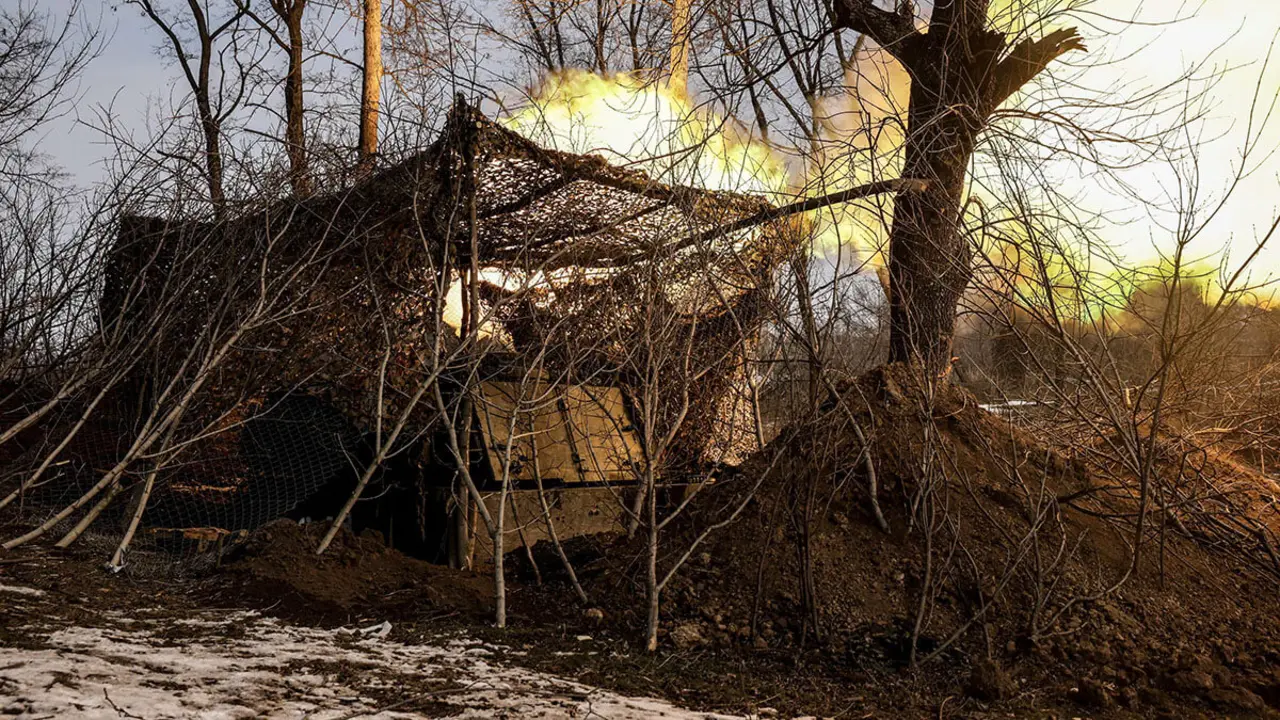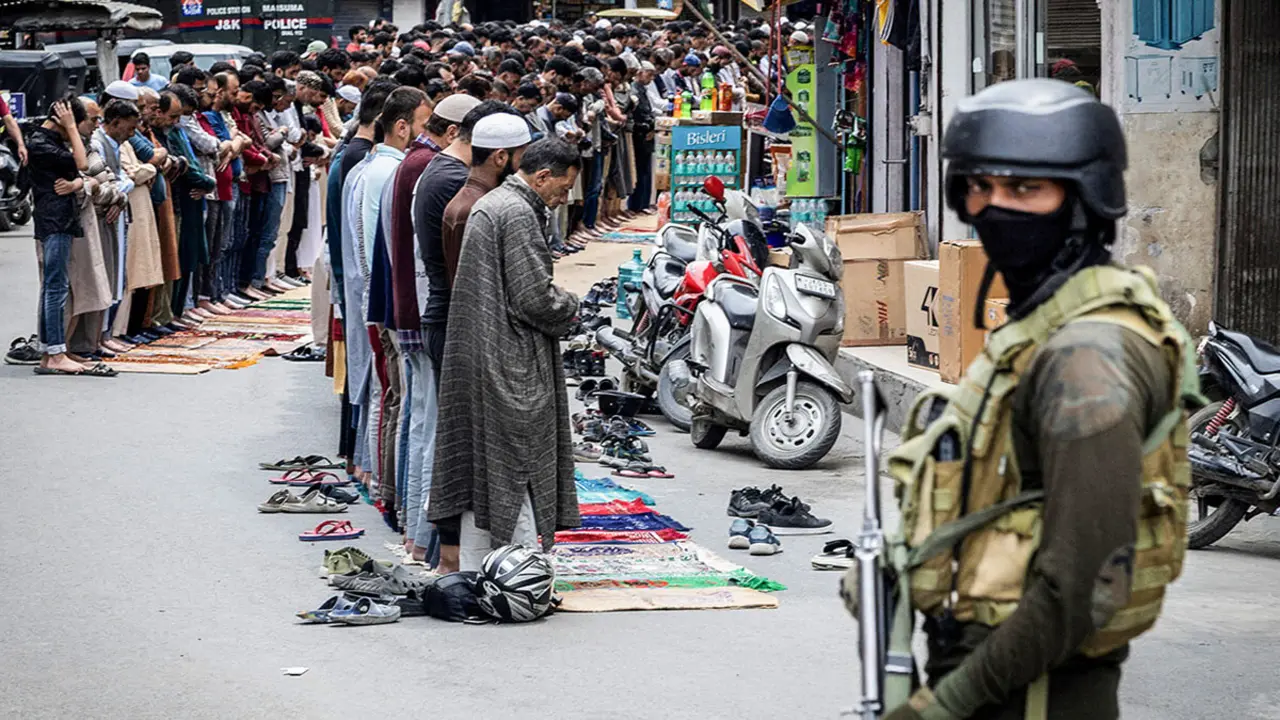Teniente coronel Roberto Aranda Gil: “La defensa del Flanco Este de Europa es la defensa de los valores de Occidente”

He is 47 years old and has been on nine international missions. When he was appointed to the last one, he didn't know that the whole world was going to look where he was going, to the Eastern flank of Europe. He is now in command of the Spanish contingent participating in the NATO mission deployed in Latvia.
Stationed in Cerro Muriano, Lieutenant Colonel Aranda took over from the previous rotation of Adazi's Enhanced Forward Presence last July and will remain there until January. Ahead of him, a few uncertain months in a changing scenario. On his back, several decorations such as the Cross of Military Merit, the Encomienda de San Hermenegildo and the four medals awarded to him by the Atlantic Alliance.
Wherever he has the opportunity, he boasts of the preparation and professionalism of today's Spanish soldiers. "It's the best thing we have in the army, the capabilities of our soldiers," he says in a tone more like a father than an officer. In Latvia, he commands more than 600 of these soldiers, from 30 different units, and works side by side with officers from ten different countries. A demanding challenge that he faces with an affable and friendly manner during his meeting with Atalayar, whom he receives in his office at the Camp Adazi base in Latvia.

What is the Spanish army doing in Latvia?
The Spanish have been deployed on the Eastern Flank of Europe since 2017, when the 28 NATO countries agreed that it was necessary to have a presence here after seeing what was happening with the annexation of Crimea. The aim of the mission is to deter Russia from further aggression against neighbouring countries. To deter and, if necessary, defend the territory of the Baltic Republics and Poland. This is what the Enhanced Forward Presence (eFP) mission in which Spain participates is all about.
When Spain deployed its first contingent here, it was the first time that mechanised armoured units (with Pizarro and Leopard tanks) were deployed outside our borders. This was a milestone at the time. And the composition of the contingent has remained so until March this year, when new special capabilities have been implemented in the wake of the war in Ukraine.
How has this mission changed as a result of the invasion of Ukraine?
From a planning point of view, the mission has not changed. But as a result of the Ukrainian invasion, both the number of troops has increased - by 35 per cent - and the additional capabilities have increased. We went from 354 to 505 troops, and as a novelty we implemented a field artillery battery, with its Arthur radar; a new support section for the sapper engineers, with new machines capable of improving defensive positions; and a Nasams anti-aircraft missile battery, with another 86 Spanish troops, at the Lielvarde base, some 50 kilometres from Adazi.
Moreover, this mission has become much more important in the international context. Europe's Eastern Flank has become the focus of attention of the entire Western world, and what has happened is that the word "deterrence", which is what defines this mission, has gone from being written in small letters to being written in capital letters and in bold letters. Indeed, at this summer's NATO Summit in Madrid, it was agreed that the Battle Groups in the three Baltic states and Poland should be upgraded to brigade status. Germany has already done so in Estonia, and Latvia and Lithuania are working on it.
How will Spain be affected by the mission being upgraded to brigade level?
The brigade will be led by Canada, which is the framework country, and the rest of us will be asked what we want/can contribute. This will be done in a series of meetings, until the details are finalised. But Spain has the capacity for this.

You have explained how the mission has changed in terms of planning and capabilities, but has the invasion of Ukraine changed the way you work here in any way?
Not from a NATO point of view, but there have been changes in Latvian attitudes: many citizens now feel more supportive of the army and many people have joined the national reserves in recent months. At weekends, they come to do shooting training on our manoeuvre range. And from January, compulsory military service will be introduced in Latvia, which will last 11 months for men and will be voluntary for women.
The countries on the Eastern flank have a different perception of the Russian threat since before Ukraine. In 2018, I took part in a rapid reaction exercise in Norway, and a Slovakian company was working with us there. Even then, their captain was telling me that our perception of Russia is not the same as that of the countries that are here... they consider Russia to be a threat "since always".
In the context you have just described, how has the Spanish contingent been received by Latvian society?
The closest town we have is Adazi, three kilometres away. We usually take advantage of Sundays to spend some time there and I can assure you that the people are delighted with us. We also do a lot of "displays" to bring the mission closer to the local people. We usually take a number of vehicles from different countries to a certain area and set up a stand so that families can come and see them and see what we do in their country, what NATO does here.

What makes this mission different from other international missions in which Spain participates?
Two aspects: it has managed to bring all NATO countries to agree on the commitments they have made to the mission, and it has taken a step forward in the level of integration of all the contingents that are part of the operation.
This eFP is composed of ten contingents: Canada, Spain, Italy, the Czech Republic, Slovenia, Slovakia, Albania, Montenegro, Poland, and a month ago North Macedonia also joined... and getting them all to speak the same language at the operational level is a challenge, because interoperability starts at the lowest level. In other words, there is a mix of troops from different countries at all levels of the operation. So in this mission, more qualifications are required of the personnel, starting with a command of English. It is the mission with the highest requirements per post.
How much time is spent in Spain preparing for the mission before deployment?
Six months. This is something that has been standardised for a long time, the preparation system is called 4+2, and it begins with a four-month training of the different units that are going to participate, and then moves on to a two-month concentration of all the troops at the same base. Over the course of these months, all personnel have to obtain certification to ensure they are ready for the mission.
The 11th rotation is now deployed, with troops from Cordoba (this is the fourth time the Cerro Muriano troops have deployed to Latvia) and the knowledge of the mission after 11 rotations is very high.

What weight does Spain have in a multinational mission like this one, commanded by Canada and where there are troops from ten different countries?
I can assure you that Spain's weight is very, very high. We are currently 30% of the eFP mission, we are the second country that contributes the most personnel after Canada -which is the framework country in charge of the integration of all the contingents in Latvia-. But if we add to the eFP mission the new anti-aircraft artillery mission that we have deployed 50 kilometres from here, at the Lielvarde base, with 86 more troops that are directly under the umbrella of NATO's Anti-Aircraft Command, we have almost half of the NATO personnel in Latvia.
The assets that Spain has deployed in this part of the world are far superior to those of other countries. From the Pizarro vehicles, to the Nasams Anti-Aircraft Battery, to anti-aircraft radar systems and other highly specialised units.
What is the return Spain receives from this mission, and what does it bring to Spain that its army is deployed here?
From the point of view of global defence, the defence of Europe's Eastern Flank is the defence of our own interests and of Western values. A country's border is not where its territorial limits end, but where its agreements and commitments with allied countries end. In Spain's case, we have two commitments, the Eastern and Southern flank, which is another critical area where we have to be present.

And then we, as an army, get a huge amount of feedback. The intensity of this mission allows us to carry out a large number of manoeuvres and exercises that provide a very high level of instruction to the troops that participate in it. And this knowledge, on returning to Spain, is distributed among the different units.
In Spain, at least before the invasion of Ukraine began, the feeling was that it was impossible for anyone to attack us. So why are these capabilities necessary in peacetime?
Spain should not think only of itself; Spain has a series of international commitments. When you sign a contract, you have to honour it. This is the same. Spain as part of the European Union, as part of NATO, as part of the UN... has a series of commitments and agreements, and we have to honour them. Because if one day we need some kind of assistance or aid, if we have not been able to fulfil our commitments, it will be difficult for the international community to fulfil them with us.

What are the new generations entering the Spanish army like now?
Depending on the social situation of a country, the situation of the army itself also varies. For example, with the economic crisis of 2008, there was a lot of new recruitment of people looking for work. Now we are at a time when young people are coming in who are very well prepared and have a different vision of the future; young people with degrees, I have never seen so many graduates in our ranks. Normally they stay for a few years, and then through internal promotion they enter the NCO scale and leave as officers. There are also very good professionals coming in, with experience in private enterprise. And the general level is much higher than in the past.

